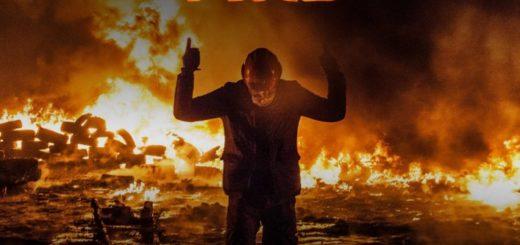What Was Done to Indigenous is Planned For Us All!!!
The Oyster World
January 16, 2016 Volume IV, #42
_____
Falstaff: I will not lend thee a penny.
Pistol: Why then the world’s mine oyster, which I with sword will open.
– William Shakespeare
The Invisible People
Athol Fugard, the South African playwright, on a recent visit to America, noted that the great – as yet unwritten – dramatic American epic would be one that dealt with the conflict of black people within the context of our history. Most of us would agree with that, and probably most novelists, dramatists and film makers would endorse the idea; in fact, the TV series Roots may have been a pretty good start.
Alternately, the cataclysmic clash between North and South would be a likely candidate, moving beyond Griffith’s The Birth of a Nation, and more recently The Red Badge of Courage, and Glory. Ken Burns’ 10-part series has provided a documentary of the required proportions.
But in the midst of such a discussion, isn’t it strange that the most obvious suggestion for the Great American novel, or the defining screen production to match the size and scope of this huge continent, is not only never mentioned, it’s as though it doesn’t exist, that it’s invisible.
The feature attraction? The big story? How about the total re-engineering of a continent’s original civilization? How about the genocide of 100 million people over five centuries? How about expanding that observation to include the universal story that has been replicated in every corner of the world since history was first recorded?
Leaving aside the entire planet, the answer is quixotic, but simple. North America, if not the Western Hemisphere, is populated, and has been so historically since stout Cortez and fat Cabot, largely by European tourists, most of whom continue to suffer from a sort of astigmatism – perhaps total blindness – with respect to the people who were here first.
Think of it: we view as invisible the First People of North America. And that total invisibility occurs globally every time, and in every place, that a discussion takes place involving what we define as the human race. Homo sapiens. Indigenous people, with one or two exceptions where they have asserted their dominance, just don’t make it into the discussion, the consideration, the dialogue and the status of people.
Why?
Indigenous societies worldwide today occupy a continuum – at one extreme, there are those who have been subjected to colonization by conquering empire nations, while at the other extreme are those who remain isolated and therefore intact as an original society.
Population numbers are difficult to determine, obviously, but estimates range between 400 and 450 million in total. That’s more than 5% of the total world population. Is that the reason for their invisibility? Partly, perhaps. One-twentieth doesn’t sound like much.
On the other hand, the current platitude that 1% of all Americans have most of the money isn’t considered an insignificant percentage. And the 5% we’re talking about, because of the enormous world population, is comprised of 5,000 distinct people in more than 72 countries.
Indigenous people exist in communities or areas in groups of as few as several dozen and also as nations numbering in the hundreds of thousands. Size, in other words, doesn’t appear to be the determinant of whether or not a group is significant. At least to the group themselves. The problem of recognition, including visibility, seems to rest in the eyes of the beholders. With the rest of us. Nous autres. We, the superior race. As in Hitler’s Aryan concept.
Another excuse for the invisibility, apart from relative size and number, is the continuous decline of indigenous numbers and their assimilation into other groups, although in rare cases, some indigenous populations are actually experiencing a recovery or growth in numbers.
But let’s stop kidding ourselves. The invisibility of indigenous people really isn’t because of their size, location, or the degree of their physical assimilation. It’s directly the result of the history of economic and religious colonization, paternalistic, religion-based and spear-headed by outright power and greed. And the raison d’etre for the colonization was The Doctrine of Discovery.
This doctrine was made manifest in the 15th Century, adopted by the European empires of Britain, France, Holland, Spain, and Portugal and buttressed by the Roman Catholic Church through a series of Papal Bulls. The whole gist of this papal law was the pronouncement that in every corner of the world any residents who had not seen the light of Christianity were automatically pagan, subhuman, and therefore expendable at the hands of invading Europeans. They were, in fact, fair game. Less than human, they could be expunged with impunity. Their land, resources and wealth subject to seizure? Of course. Because such sub-humans were not worthy of recognition.
Invisible.
Bartholomew Dean and Jerome Levi, in 2003, wrote about the improvement of the circumstances of indigenous people in some areas, while their human rights – cultural and linguistic preservation, land rights, resources and self determination – continue to be abused in other realms. And the lack of advancement invariably is a function of their visibility, their recognition.
Many indigenous groups continue to be totally vulnerable to oppression from invaders and foreign governments. The Government of Bangladesh has stated that there are “no indigenous people in Bangladesh,” while at least 18 indigenous peoples are listed as collectively part of the “Indigenous Peoples of Chittagong Hill Tracts.”
In a similar fashion, former Prime Minister Stephen Harper of Canada has pronounced on an international stage (a G20 Summit) that “Canada has no colonial history,” and, subsequently has declared that there is no need for the repeal of the infamous Indian Act, while the 1.3 million native people in what is known by its European name of Canada are demonstrably a tiny fraction of the population that once extended from the land of the Mi’kmaq to Tuktoyaktuk. (In the United States, the combined populations of Native Americans, Inuit, and other indigenous designations total close to 3,000,000; in Mexico twice that number.)
Indigenous peoples are distinguished from other minorities in most modern countries by the fact that they seek to maintain traditional ways of life. In North America (nee Turtle Island) and South America, they are to be found, albeit in drastically decimated numbers, from the high Arctic to the southern extremities of Tierra del Fuego. But their sustained efforts, like their existence and well-being, remain anathema to even the most progressive of successive governments from Canada to Chile.
Throughout the post-Columbian history of the hemisphere, the incredible decline, the genocide, has proceeded as the result of outright massacre, epidemic diseases, some deliberately promulgated, displacement, conflict, compulsory boarding schools and exploitation.
But the world’s forgotten, the indigenous people, are not invisible to us merely because we have downgraded them to a condition less than human. The more spiritual, the more enlightened among them – such as the statesmanlike Red Cloud – have known that they will survive, and that we are the ones who have lost. Because of our colossal failure, having gained everything only to have surrendered the natural world, we, the so-called “white race,” like Samson among the Philistines, have lost not only our way but our vision.
We, like Samson Agonistes, shorn of our power by the truth, for the want of the truth, are the ones who are eyeless in Gaza.













